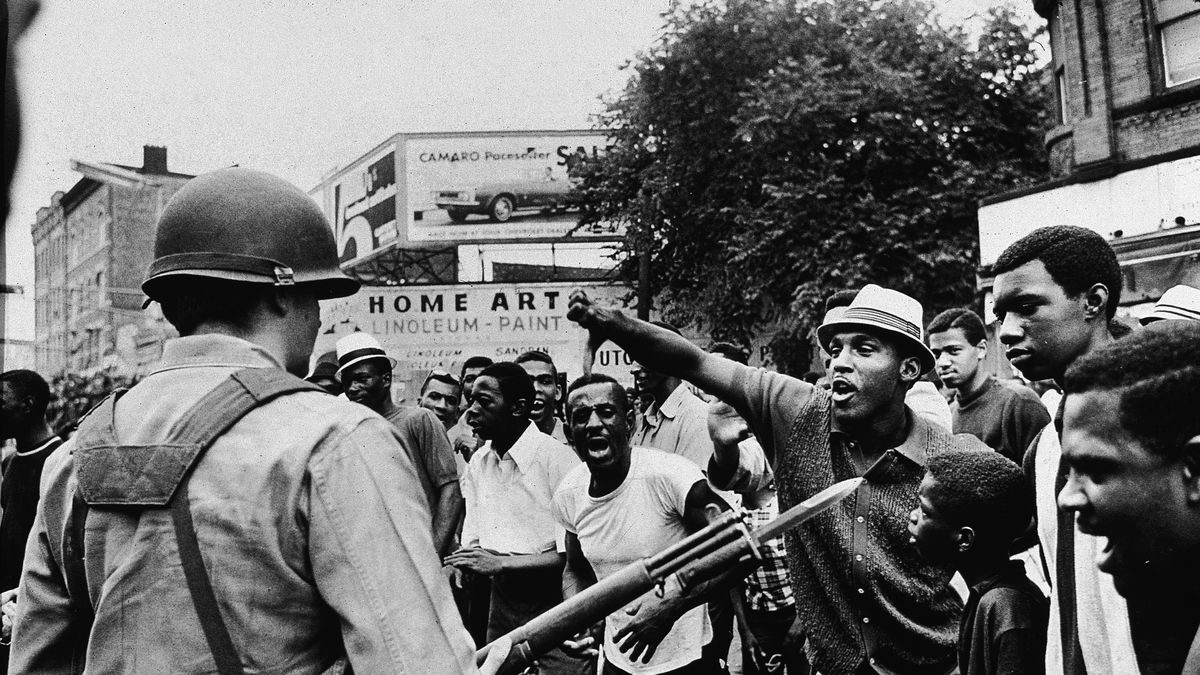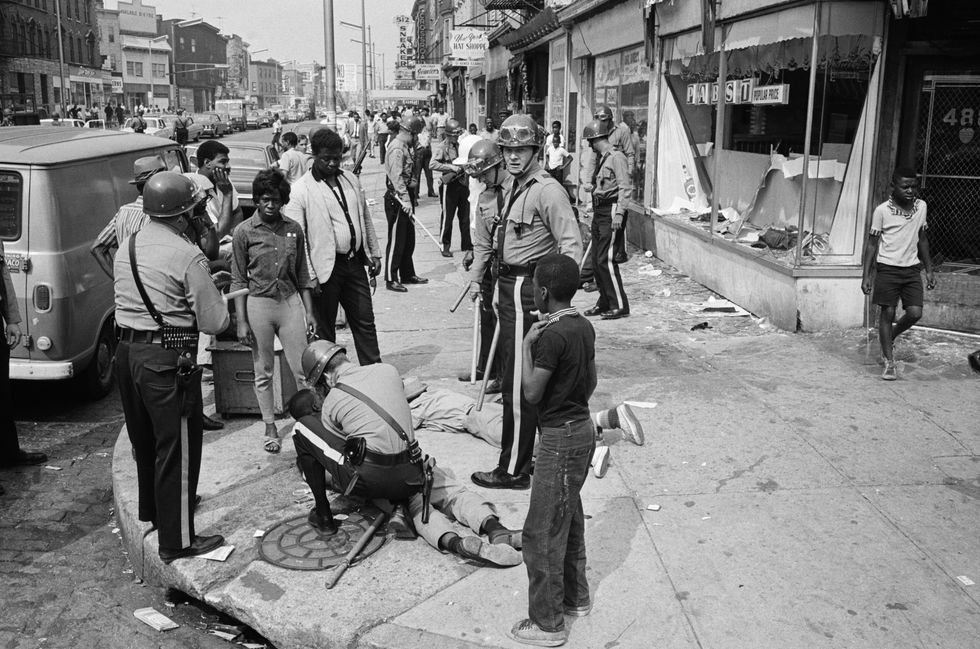In The Many Saints of Newark, a young Anthony Soprano lies awake in bed at night as downtown Newark smoulders in the distance. Gunshots ring out and the streets are lined with fire for several days after racial tensions in New Jersey's largest city have reached a fever pitch.
While the film is a fictional history of Tony Soprano, recounting the events of his childhood that would shape him into the troubled mafioso he later becomes in David Chase’s beloved HBO series, the film also incorporates some real history. The Newark unrest depicted in Many Saints really did occur in 1967, just as uprisings of oppressed Black communities around the country in Los Angeles, Harlem, and Detroit were occurring as well.
Here’s the true story of what happened in Newark.
On July 12, 1967, residents of a public housing development in Newark watched as police officers beat up and arrested a Black taxi driver outside their building—an event similar to one that occurs in the film. The crowd that witnessed the incident then followed the police to the Fourth Precinct, where they protested outside. Soon after, word began to spread that the driver, who had been taken into the station, had been killed. It wasn’t true that he had died in police custody, but the rumour ignited the violent clashes in the city that followed for the next several days.
From July 12 until July 17, 1967, police and protesters battled in the streets, as is depicted in The Many Saints of Newark. 26 people were killed and over 700 were injured, the majority of them Black residents of the city. According to the New York Times, the riots caused $10 million in damages, and some burned down blocks remain vacant lots to this day.
"The first two or three days there was a sense that this was the relief and the release that people needed," Junius W. Williams, a law student at the time and the now director of the Abbott Leadership Institute at Rutgers University, told the New York Times in 2017. "But in the second three days, once the combined police force — local, state and the National Guard — had been fully deployed, there was fear, because the police rioted. If this was a rebellion, the police rioted. They took it in their own hands to seek retribution against people for the slightest infraction."
Though Many Saints tells a fictional tale, the racial tensions that fuel its conflict are an accurate portrait of that era in America and in Newark.
Lauren Kranc is the assistant content strategy editor at Esquire, where she runs the brand’s social media accounts and covers pop culture and television, with entirely too narrow an expertise on true crime shows













